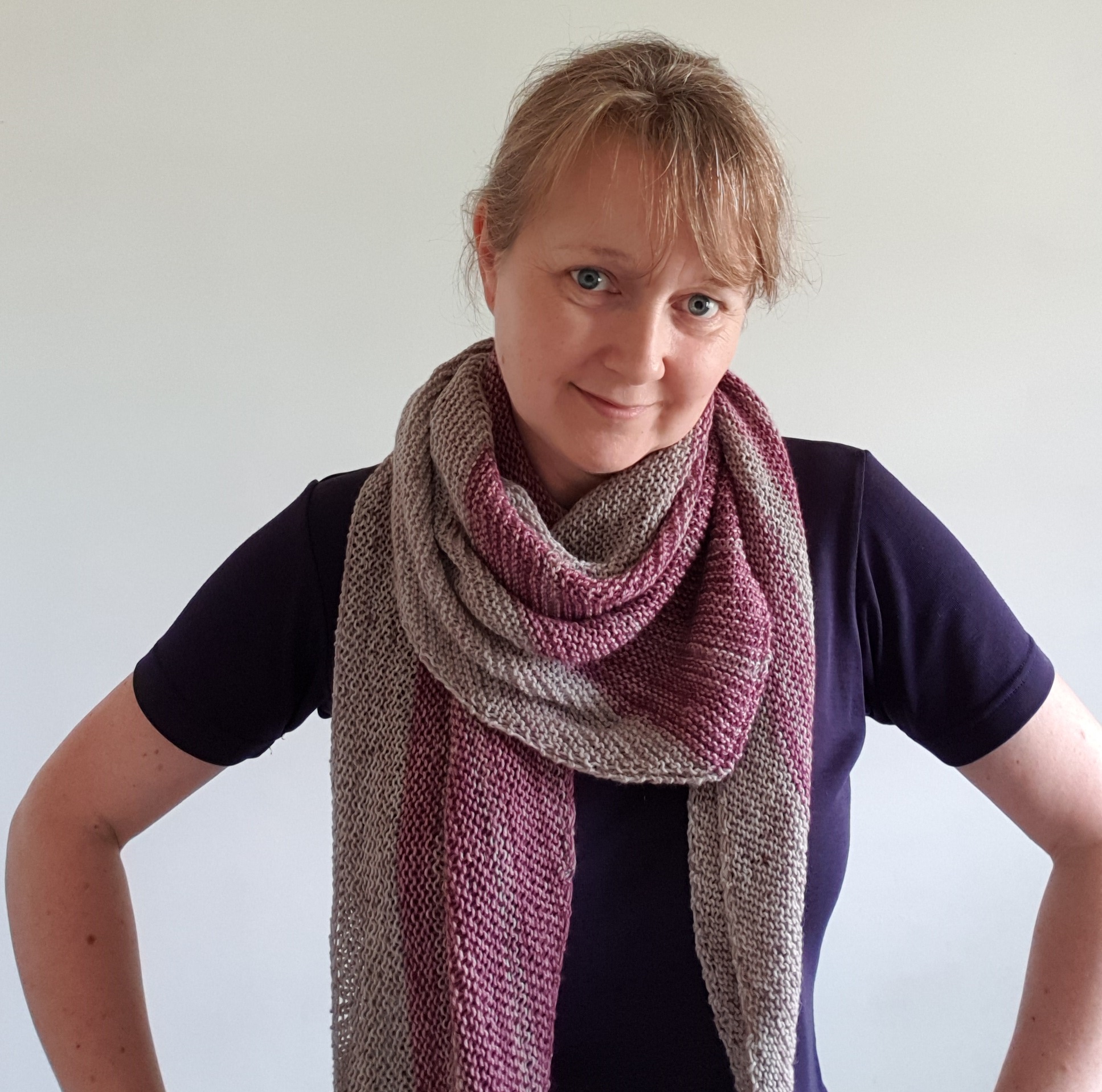There’s a lot to be said for knitting a square blanket in the round, rather than knitting it flat. I don’t know about you and I’m fairly sure it defies the laws of physics but I’m convinced that a square knit flat takes far, far longer than one knit in the round.
At some point when I have three-quarters of a square I always start doing a heck of a lot of measuring, certain that after these last few rows I will have knit enough. Or if all else fails I start trying to convince myself that everyone really wants a wide, short rectangular blanket rather than a square one. Obviously they don’t - it would just look weird and exactly like you’d given up three quarters of the way through but such are the tales I try to tell my inner knitter.
Instead I find that if you knit a blanket in the round it’s all bunched up on your needles and you can keep knitting and knitting, through films, kids playparks and all manner of events. It’s easier on the hands and (if you are doing stocking stitch) there’s the added benefit of no purling. It does mean of course that it’s harder to spread it out for photographic/measuring purposes but you can’t have everything and I’d rather just keep knitting so that the eventual size is a happy surprise when I finally bind it off.
If you’d like to try knitting a blanket in the round, as with everything there is more than one way to go about it.
Knit a central square - this is my favourite method and one I come back to time and time again. In my Fuss Free Baby Blanket (a free download on my website) it starts with a central garter stitch square. You then keep the live stitches on the needle, place a marker and pick up the same number of stitches along each of the 3 sides - adding a marker at each corner. You then alternate a mitered increase round with a plain round building up the square from the centre out. Easy peasy. You can add stripes or whatever takes your fancy make the most of fuss free, portable knitting.
The other option is to start with a small number of central stitches - usually on DPNs - and build the increases from there. This can be a bit more fiddly but is perfectly straightforward to master. My basic recipe for this is as follows:
Cast on 8 sts and divide equally across 4 DPNs
Rnd 1: kfb in each st (8 sts inc)
Rnd 2: k
Rnd 3: *kfb, k to last st on DPN, kfb. Rep from * 3 more times (8 sts inc)
Rnd 4: k
Rep rnds 3 and 4 - each increase round adds 8 sts. Once you have sufficient sts you can switch to a circular needle. I like to switch to a 60cm cable once I have about 80sts in total. It might be a bit tight for the first few rounds but as you add more stitches it soon becomes easier.
Two ways of achieving the same result, but both with the nifty feature of avoiding the tedium of an “almost there” blanket knit flat.






